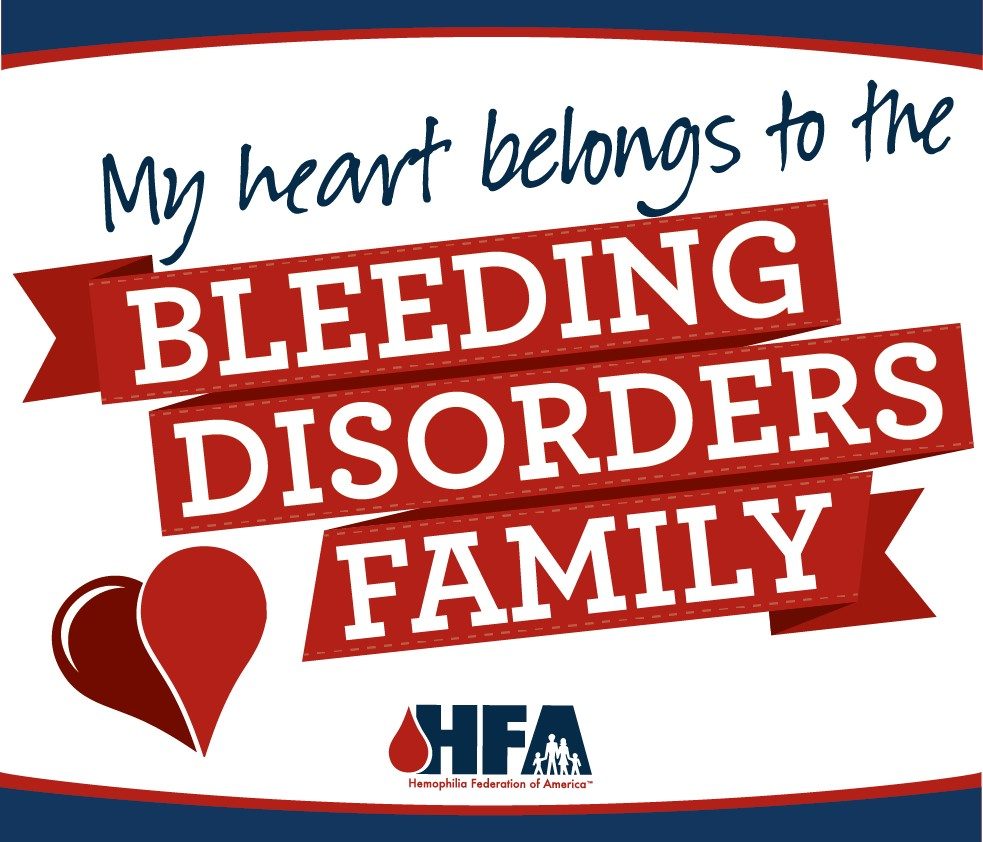By: Red Hot Mamas
Published: March 1, 2017
March is bleeding Disorders Awareness Month!
Hemophilia is typically thought of as a man’s bleeding disorder, but women can have it too. Von Willebrand disease (VWD) is the more common bleeding disorder in women, and occurs in about 1% of the US population. It is caused by a defect in or deficiency of von Willebrand factor, a protein the blood needs for clotting.
A bleeding disorder results from a flaw in the body’s clotting system. Specialized proteins in the blood are called clotting factors. If they are missing or do not work properly, a bleeding disorder can result. Most bleeding disorders are inherited, caused by a genetic mutation, but some can occur spontaneously. People with bleeding disorders bleed longer, not faster, than those who do not.
You may have a bleeding disorder if you have one or more of the following symptoms:
I have heavy menstrual periods
- Bleeding for more than 7 days, from the time it began until it stopped
- Flooding or gushing of blood, limiting daily activities such as housework, exercise or social activities
- Passing clots that are bigger than a quarter
- Changing tampon and/or pad every 2 hours or less on heaviest day I have been told I am “low in iron” or I was treated for anemia
I have bleeding symptoms and someone in my family has a bleeding disorder, such as von Willebrand disease, or a clotting factor deficiency, such as hemophilia
I have experienced heavy bleeding from dental surgery, other surgery, or childbirth and/or have other additional bleeding symptoms such as:
- frequent prolonged nose bleeds (longer than 10 minutes) or
- prolonged bleeding from cuts (longer than 5 minutes) or
- easy bruising (weekly, raised and larger than a quarter)
If you have one or more of these symptoms, please speak with your doctor or other healthcare professional.
Women and girls may also have mild hemophilia (“symptomatic carriers”), meaning that in addition to carrying the gene, they also exhibit symptoms. In some cases, females are diagnosed with hemophilia A, or factor VIII deficiency, or hemophilia B, factor IX deficiency—both of which are hereditary. Further, they can have any of the rare factor disorders, such as factor I, II, VI, VII, XI and XIII deficiency.
Although men and women with bleeding disorders have similar symptoms, such as bleeds into joints and tissues, women can experience added complications during menstruation, pregnancy, labor and delivery. Some doctors are not familiar with bleeding disorders in women, many of whom are undiagnosed or misdiagnosed. Women with undiagnosed and untreated bleeding disorders risk serious complications.
Victory for Women (V4W) is NHF’s health initiative to address the critical issues faced by women with bleeding disorders. V4W follows in the footsteps of “Project Red Flag: Real Talk about Women’s Bleeding Disorders”, which brought significant attention to the many women struggling for an accurate diagnosis and appropriate health care. Now that the flag has been raised, V4W continues the work, seeking to educate all about girls, women and bleeding disorders.
If you have symptoms of a bleeding disorder, it is important to get a proper diagnosis and treatment from a specialist, called a hematologist. In the U.S., there is a network of hemophilia treatment centers (HTCs) that provide comprehensive care to patients with hemophilia and other bleeding disorders. HANDI, the National Hemophilia Foundation’s information resource center, can provide information on bleeding disorders and the nearest HTC.
Source: https://www.hemophilia.org/
Source: https://stepsforliving.hemophilia.org/sites/all/themes/stepsforliving/pdf/quick_facts.pdf
 Red Hot Mamas In Charge of Change.
Red Hot Mamas In Charge of Change.




